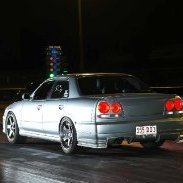Forged Rb25 Lifter/possible Oil System Problems.
Announcements
-
Similar Content
-
Latest Posts
-
What!? US law does not apply to the rest of the world!!!
-
No requirement for JDM vehicles, which the 33 is, maroney label only needed in the US market for new cars I believe (Federal law stuff) Google knows all
-
Hopefully you can just unbolt them, thank them for their service, then bin them and not replace them Apparently the sensors like to set them off with only minor impacts at low speed It looks like they do a delete kit for some of these, but, it is costly
-
I hope it's actually possible. This is a write off in insurance world.
-
Yup. 2-way with shallow ramp angles. Still works.
-







Recommended Posts
Create an account or sign in to comment
You need to be a member in order to leave a comment
Create an account
Sign up for a new account in our community. It's easy!
Register a new accountSign in
Already have an account? Sign in here.
Sign In Now